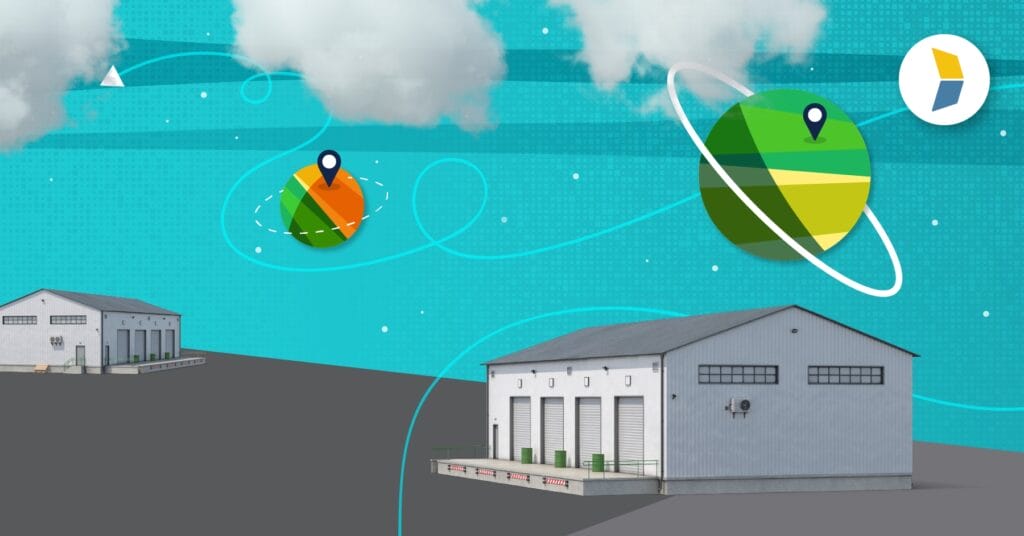It’s no secret that, as exciting as growth is, it can add new challenges for businesses. In ecommerce, this is very true. When it’s time to scale retail operations, things can get complicated, especially with logistics.
As brands grow, keeping up with demand while scaling fulfillment and maintaining fast delivery becomes increasingly complex. With customers shopping across multiple channels, it’s more important than ever to have inventory in the right place at the right time—all while optimizing for efficiency and cost.
One of a brand’s most powerful tools is knowledge. Understanding where and how to receive, distribute, and fulfill orders can be the difference between running a good business and a great one. And that starts with knowing the role each type of facility plays.
What is a distribution center?
We’ve all heard the terms warehouse, fulfillment center, and distribution center thrown around. But what’s the difference between them?
While the terms are often used interchangeably, each is a separate facility that makes up part of a retailer’s supply chain and is used at different stages of growth. They may seem “the same,” but in reality, there are nuanced differences.
A distribution center is a facility that typically stores products in bulk (think big pallets and large product quantities) and redistributes them to retailers, warehouses, fulfillment centers, or other distribution points. In other words, distribution centers are a B2B intermediary opposed to a DTC fulfillment function.
Not every brand needs a distribution center. But it’s essential to know when and how to use them to create a scalable logistics strategy.
Distribution center vs. fulfillment center vs. warehouse
Different supply chain facilities serve different purposes, kind of like coffee makers. You wouldn’t use an espresso machine to brew a full pot, and you wouldn’t expect a French press to whip up a quick shot.
Each facility is built for a specific job and can be vital in building an optimized supply chain that gets products where they need to be as quickly and effectively as possible.
In logistics, location is often everything. To determine where products need to be (and when!), a retailer needs to look at each type of logistics center and how it would fit into their overall logistics plan.
| Distribution Center | Fulfillment Center | Warehouse | |
| Primary Function | Stores and redistributes products in bulk to other businesses or locations | Handles individual customer orders; picking, packing, and shipping | Stores inventory for long-term holding |
| Typical Use Case | B2B, replenishing retail stores or fulfillment nodes | DTC ecommerce, small parcel shipments | Overflow or reserve inventory |
| Order type | Pallet or bulk shipments | Individual or small-batch orders | Rarely processes outbound orders |
| Speed of Product Movement | Moderate to fast based on transfer schedules | High-speed, real-time order processing | Low; inventory may sit for extended periods |
| Technology | WMS, inventory forecasting tools | WMS, OMS, automation for picking and packing | Basic or manual inventory tracking |
| Returns Processing | Limited; often handled elsewhere | Fully integrated returns and restocking workflows | Typically not used for returns |
| Best For | Mid-to-large ecommerce brands, omnichannel strategies | Ecommerce brands with DTC fulfillment needs | Brands needing passive inventory storage |
| Strategic Benefit | Efficient regional or retail inventory distribution | Fast, accurate delivery and optimized customer experience | Cost-effective storage with minimal handling |
How ecommerce retailers use distribution centers
Brands often use distribution centers as part of their supply chain as their operations become larger and more complex. In general, ecommerce retailers using distribution centers are mid- to large-sized and have:
- High SKU count
- Nationwide or global presence
- Retail/wholesale partnerships
- High order volume
These distribution centers serve a variety of purposes, but primarily support multi-channel inventory distribution and omnichannel fulfillment. For some, it acts as a replenishment hub for retail stores or smaller fulfillment centers. It can reduce shipping times by keeping inventory closer to regional demand centers. It can also be used as a way to position goods ahead of time for peak season or product launches.
Brands that are smaller (low volume) or DTC-only aren’t likely to use a distribution center.
Best practices for using a distribution center
Several components make a distribution center more efficient:
- Inventory Optimization: Just like a fulfillment center, it’s helpful to use demand forecasting and real-time tracking to keep inventory optimized.
- Integration: Connect ecommerce platforms, ERPs, and any inventory management software to provide real-time visibility and up-to-the-minute data.
- Strategic Location: Use centers close to demand hubs for faster replenishment.
- Supplier Coordination: Reliable, upstream communication is critical for ensuring timely, accurate deliveries. This helps get the right products in the right quantities to meet downstream demands without delays or bottlenecks.
- Cross-docking (optional advanced tactic): Use cross-docking when you need fast turnaround times. Bypass storage and transfer directly to outbound trucks to get goods to their destination faster.
Pros and cons of using a distribution center
In reality, it’s not necessarily pros and cons, but advantages and disadvantages of using distribution centers. It all comes down to timing and unique business needs.
Pros
- Efficient bulk inventory storage and movement
- Cost savings through consolidated shipping
- Scalability during high-demand seasons
- Better retail support and B2B logistics
- Opportunity to segment fulfillment strategies geographically
Cons
- Not designed for DTC order fulfillment
- Higher upfront costs and long-term contracts
- More complex inventory coordination across multiple nodes
- Need for advanced logistics systems and operational oversight
What type of facility should I be in?
As ecommerce brands grow, so do the stakes in their logistics strategy.
While not every business needs a distribution center, understanding its role (and how it differs from warehouses and fulfillment centers) can be key to scaling efficiently. The right distribution center setup can reduce shipping times, support omnichannel strategies, and create a more resilient supply chain. By knowing when and how to leverage one, retailers can stay ahead of demand and build a logistics network that grows with them.
Fast growth is a good problem, but if you’re unsure your business is ready for a distribution center, talk to a Kase fulfillment expert today. The team can help build an efficient and effective logistics solution, tailored to your business.


